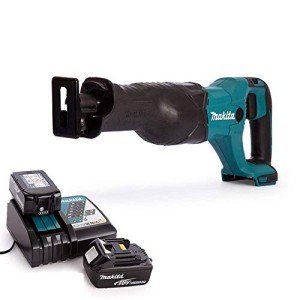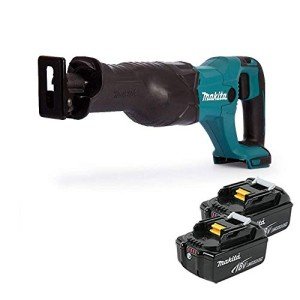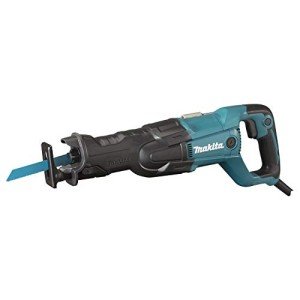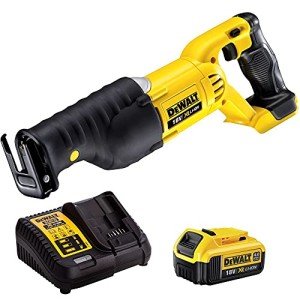In the world of cordless power tools, efficiency, portability, and innovation reign supreme. Among these, the Makita 18V cordless mini reciprocating saw stands out for its compact size, versatility, and impressive performance. However, to ensure optimal performance and longevity, understanding the batteries that power this tool is essential. This guide delves into the specifics of Makita 18V cordless mini reciprocating saw batteries, how they work, their types, and some frequently asked questions.
The Importance of Battery in Cordless Tools
Cordless power tools have revolutionized the way tradespeople and DIY enthusiasts alike approach their projects. The battery is at the heart of this revolution, providing the necessary power without the hindrance of cords and outlets. Here are several reasons why batteries are paramount in cordless tools:
- Portability: Cordless tools can be used anywhere without having to plug into a power source.
- Convenience: Users can quickly switch between tools without worrying about tangled cords.
- Versatile Applications: Suitable for a wide range of tasks, from DIY projects to professional constructions.
Given these advantages, the right battery for tools like the Makita 18V cordless mini reciprocating saw can significantly impact performance, runtime, and overall user experience.
Types of Makita 18V Batteries
Makita offers different types of 18V batteries that are compatible with their tools, including the mini reciprocating saw. Understanding these battery types can help users make better decisions based on their needs.
1. Lithium-Ion Batteries
- Description: The most common type used in modern cordless tools.
- Pros:
- Lightweight and compact.
- Higher energy density compared to other battery types.
- Minimal self-discharge, allowing them to hold a charge longer.
- Cons:
- Higher initial cost.
2. Nikola Batteries (NiCad)
- Description: An older technology that is still in use.
- Pros:
- Generally lower cost upfront.
- More durable against physical damage.
- Cons:
- Heavier and bulkier than lithium-ion.
- Memory effect can impact performance and capacity over time.
3. Lithium-Ion Compact Batteries
- Description: A smaller variant of lithium-ion batteries.
- Pros:
- Greatly reduces weight for handheld tools.
- Shorter charge time.
- Cons:
- Reduced capacity compared to standard lithium-ion.
Table 1: Comparison of Makita Battery Types
| Battery Type | Weight | Charge Time | Price Point | Durability |
|---|---|---|---|---|
| Lithium-Ion | Light | Short | Higher | Moderate |
| Nickel Cadmium (NiCad) | Heavy | Moderate | Lower | High |
| Lithium-Ion Compact | Very Light | Very Short | Higher | Moderate |
Choosing the Right Battery for the Makita 18V Cordless Mini Reciprocating Saw
When selecting a battery for a Makita 18V cordless mini reciprocating saw, it's essential to consider the following factors:
- Runtime Needs: Depending on workload, choose a battery that provides adequate runtime. Larger batteries can offer extended use but may add weight.
- Weight: For overhead or prolonged use, lighter batteries are preferable for user comfort.
- Power Output: Ensure that the battery's Amp hour (Ah) rating is suitable for the intended applications.
Maintenance Tips for Makita 18V Batteries
To maximize battery life and performance, consider these maintenance tips:
- Charge Regularly: Keep batteries charged to maintain optimal performance.
- Avoid Extreme Temperatures: Store and charge batteries in a temperature range of 50°F - 104°F (10°C - 40°C).
- Prevent Deep Discharge: Don't let the battery drain completely; recharge it after each use.
- Clean Contacts: Regularly check and clean battery contacts to ensure a proper connection.
- Use Compatible Charged: Always use Makita-approved chargers to avoid damage.
Frequently Asked Questions (FAQs)
1. How long does a Makita 18V battery last?
The lifespan varies based on usage and maintenance but generally ranges around 3-5 years with regular care.
2. Can I use my Makita 18V battery on other Makita tools?
Yes, most Makita 18V batteries are interchangeable between the compatible tools in their product line.
3. How can I tell if my battery is no longer holding a charge?
If your battery depletes quickly after a full charge or fails to charge entirely, it may be nearing the end of its life.
4. What is the difference between LXT and CXT batteries?
LXT (Lithium-ion Xtreme Technology) batteries are larger and offer more power, while CXT (Compact) batteries are smaller and lightweight, suited for lighter tools.
5. Can I replace my Makita Li-ion batteries with NiCad batteries?
It is not recommended to mix battery types, as each has specific voltage and charging requirements. Stick to the type originally intended for your tool.
The Makita 18V cordless mini reciprocating saw is an essential tool for professionals and DIY warriors alike. Understanding the batteries that power this equipment can lead to improved performance, prolonged tool life, and enhanced user satisfaction. With advancements in battery technology and careful handling, users can take full advantage of the unique capabilities offered by Makita's innovative line of cordless tools.
By selecting the right battery based on performance needs and adhering to maintenance best practices, users can ensure their projects are completed efficiently and effortlessly.






